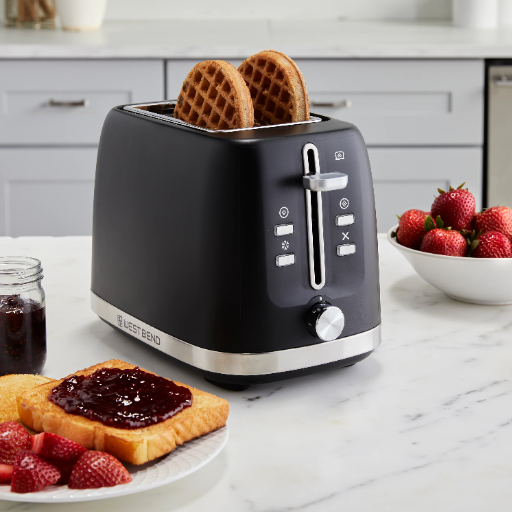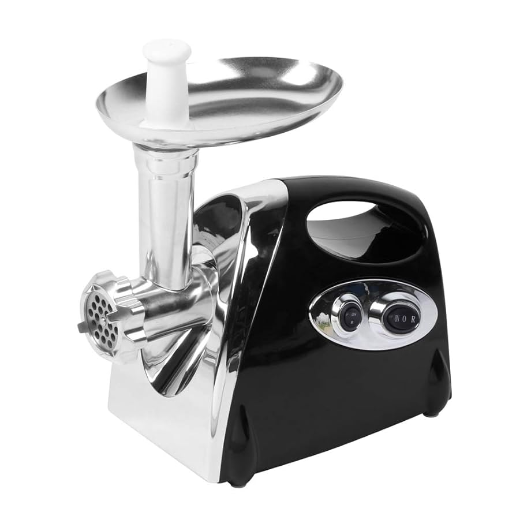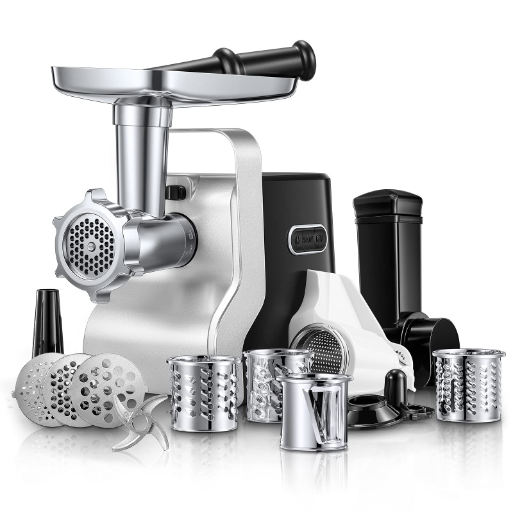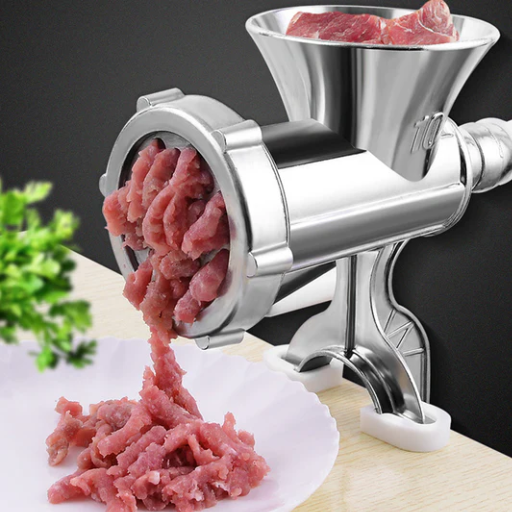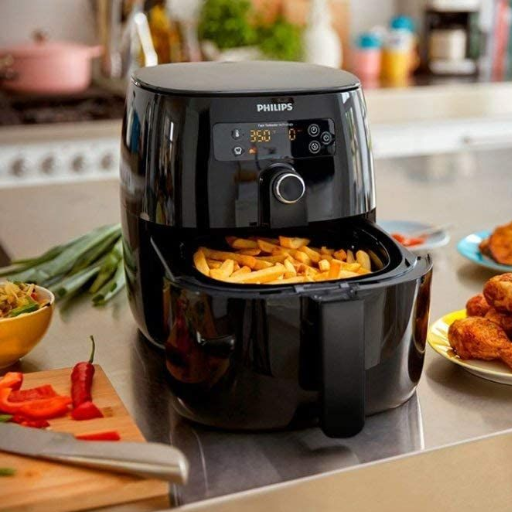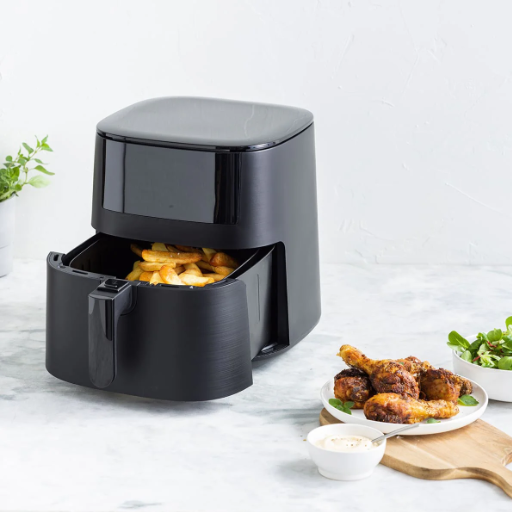Tea is more than just a beverage; it is a ritual, a connection to tradition, and a way to relax and rejuvenate. Whether you are a tea enthusiast or a business looking to explore wholesale opportunities, this guide will help you uncover the secrets behind porcelain and glass tea sets. From understanding the unique characteristics of each material to exploring their benefits, we will walk you through everything you need to know. This blog post also dives into key considerations for selecting the perfect teapots for personal use or business needs, along with tips for sourcing them wholesale effectively. By the end, you’ll be equipped with all the knowledge necessary to make informed choices, blending aesthetics, functionality, and value into your tea-drinking or selling experience.
What are the best wholesale teapot options for retailers?

In the case of choosing the optimal wholesale teapot options for retailers, it is essential to pay attention to quality, selection, and overall market appeal. Retailers should seek out teapots crafted from sturdy materials like porcelain, ceramic, or stainless steel because they are both functional and enduring. Retailers should stock a mix of traditional designs such as Chinese Yixing teapots alongside modern furniture to capture a larger audience. Also, to differentiate them from competitors, consider incorporating special features like heat retention, ergonomic handles, and unique design aesthetics. Above all, partnering with reputable wholesale suppliers will guarantee dependable quality and consistency for your business stock.
Porcelain teapots: Elegance and durability
Porcelain teapots are celebrated for their timeless elegance and exceptional durability, making them a favored choice among tea enthusiasts. Crafted from refined clay and fired at high temperatures, they offer a smooth, non-porous surface that resists staining and preserves the tea’s natural flavor. Porcelain’s excellent heat retention keeps tea warm for longer, enhancing the overall brewing experience. These teapots are also incredibly versatile, suitable for brewing various types of tea due to their minimal impact on flavor profiles. Available in a wide range of designs, from intricate hand-painted motifs to minimalist modern aesthetics, porcelain teapots seamlessly blend functionality with artistry. For those seeking high-quality, durable, and visually striking teaware, porcelain teapots are an ideal choice.
Glass teapots: Showcasing tea brewing beauty
Glass teapots are prized for their transparency, which allows tea enthusiasts to witness the brewing process firsthand, elevating the sensory experience. Made from high-quality borosilicate glass, these teapots are highly resistant to thermal shock, ensuring durability and safe use with both boiling water and delicate temperature requirements. The clear construction also makes them ideal for flowering teas and loose-leaf varieties, as the visual presentation of the tea unfurling adds an artistic element to your brew. Available in elegant shapes and often equipped with built-in infusers, glass teapots combine beauty and practicality, making them a popular choice for both casual drinkers and tea connoisseurs.
Ceramic teapots: Variety and affordability
Due to their adaptability, strength, and economical nature, ceramic teapots are enjoyed by tea lovers all over the world. They come in different shapes, sizes, colors, and styles which enables users to customize their personal tastes or kitchen décor while relaxing and sipping on tea. Enhancing the entire brewing experience, ceramic teapots retain heat excellently and keep your tea warmer for a longer time. In addition to that, they do not interact with the contents of the pot, so the flavor is not changed, making them ideal for every tea from herbal blends to black tea. Striking the perfect balance between practicality and elegance, ceramic teapots are widely available, affordable, and aesthetically pleasing as they serve a functional purpose.
How to choose the right wholesale teapot supplier?

When choosing the right wholesale teapot supplier, start by evaluating their product quality to ensure durability and customer satisfaction. Look for suppliers offering a wide variety of designs and materials to cater to diverse preferences. Check their pricing structure to ensure it aligns with your budget and desired profit margins. Additionally, assess their reliability in terms of delivery times and customer support. Finally, read reviews or seek recommendations to gauge their reputation and establish a trustworthy partnership.
Evaluating supplier reputation and reliability
To assess a supplier’s reputation and reliability effectively, start by researching their track record through verified customer reviews, testimonials, and ratings on trusted platforms. Look for consistent positive feedback regarding product quality, shipping timeliness, and customer service responsiveness. Secondly, examine their industry certifications or affiliations, as these often indicate a higher adherence to quality standards. Additionally, request references from businesses they have previously worked with to gain firsthand insights into their reliability.
Comparing wholesale prices and minimum order quantities
When comparing wholesale prices and minimum order quantities (MOQs), it is crucial to evaluate multiple suppliers to identify the best match for your business needs. Wholesale prices often vary based on factors such as product quality, manufacturing costs, and volume discounts. Analyze whether the price reflects the quality standards required for your target market. At the same time, consider the supplier’s MOQ, which determines the minimum commitment necessary to place an order. MOQs can range widely depending on the supplier and product type, so choose an option that aligns with your inventory capacity and budget.Additionally, exploring flexible MOQs or tiered pricing models with suppliers can help optimize costs effectively. By comparing multiple options and leveraging negotiations, businesses can identify the most cost-efficient suppliers while minimizing risks.
Assessing product quality and customization options
Evaluating product quality starts with requesting sample products from suppliers to assess materials, durability, and overall craftsmanship. Check for alignment with industry standards and customer expectations to ensure consistency. For customization, consider suppliers that offer flexible options such as branding, packaging, and design alterations. Clear communication about specifications and reviewing prototypes can prevent errors in the final product. Additionally, researching supplier reviews and certifications helps verify their reliability and capability to meet both quality and customization needs. This approach minimizes risks and ensures products cater to target market demands effectively.
What are the most popular teapot sets for wholesale buyers?

When it comes to the most popular teapot sets for wholesale buyers, key trends revolve around functionality, design, and material quality. Glass teapot sets with stainless steel infusers are highly sought after for their modern look and durability. Traditional ceramic sets featuring intricate patterns or minimalist aesthetics also remain popular, catering to diverse tastes. Buyers often prefer teapots with multi-use features, such as compatibility with loose-leaf tea and tea bags, as well as sets that include matching cups or trays for a complete, cohesive look. Eco-friendly materials, like bamboo handles or sustainably sourced ceramics, are also growing in demand, reflecting a shift towards sustainability.
Traditional porcelain tea sets with cups and saucers
Traditional porcelain tea sets are renowned for their timeless elegance and durability. These sets often feature intricate designs influenced by cultural motifs, including florals, landscapes, or geometric patterns, adding a touch of sophistication to any tea ritual. Porcelain’s non-porous nature helps retain the flavor and temperature of tea, making it a preferred material for tea enthusiasts. Many classic sets include matching cups and saucers, reflecting a cohesive design for a formal tea experience. They are available in various styles, from hand-painted vintage pieces to modern interpretations with minimalist embellishments, catering to both traditionalists and contemporary tastes. Porcelain tea sets are also highly valued as gifts and collectibles, owing to their craftsmanship and historical significance.
Modern glass teapot sets with infusers
Modern glass teapot sets with infusers are a perfect blend of functionality and visual appeal, ideal for brewing and serving tea. These sets often include a borosilicate glass teapot, which is highly durable and resistant to thermal shock, along with a removable infuser for loose leaf teas. The transparent design not only showcases the brewing process but also allows tea enthusiasts to admire the rich colors of their brews. Many sets are enhanced with ergonomic handles and non-drip spouts, making them both practical and elegant. Additionally, these teapot sets are versatile, accommodating various types of teas like green, black, or herbal blends, and easy to clean, often being dishwasher safe. Their combination of modern aesthetics and efficient brewing makes them a popular choice for everyday use and as stylish gifts for tea connoisseurs.
Gongfu tea sets for Chinese tea ceremonies
Gongfu tea sets are specifically designed to enhance the art of traditional Chinese tea ceremonies, focusing on precision and appreciation of flavor. These sets typically include a small teapot, a gaiwan, fairness pitcher, tea cups, and a tea tray to capture spills. The small size of the vessels allows tea masters to brew multiple infusions in precise quantities, unlocking the complex layers of aroma and taste found in premium Chinese teas like oolong, pu-erh, or white tea.
Using a Gongfu tea set requires a step-by-step ritual, starting with warming the vessels and rinsing the tea leaves to awaken their flavor. The meticulous pouring and timing techniques are designed to elevate the tea-drinking experience, making every cup a celebration of tradition and craftsmanship. These sets are valued not only for their practicality but also for their aesthetic appeal, with many crafted from materials that absorb tea oils over time, further refining the flavor of future brews. Suitable for novices and seasoned tea enthusiasts alike, Gongfu tea sets offer a harmonious blend of function, culture, and elegance.
How to maximize profits when selling wholesale teapots?

To maximize profits when selling wholesale teapots, focus on a few key strategies. First, source high-quality teapots at competitive prices by building strong relationships with reliable suppliers. Next, identify your target audience and tailor your product offerings to their preferences, whether they prioritize modern designs, traditional craftsmanship, or specific functionalities. Enhance your marketing efforts through compelling product descriptions, professional imagery, and leveraging social media to reach a wider audience. Offer value-added services like bulk discounts, gift packaging, or customization options to attract buyers. Finally, carefully manage inventory to avoid overstocking while efficiently meeting customer demand.
Identifying target markets and tea drinking trends
To identify target markets for tea, it is crucial to understand varying consumer preferences and behavioral trends. Globally, tea enthusiasts range from health-conscious individuals seeking herbal and green teas for their wellness benefits to traditionalists who prefer black and specialty teas tied to cultural heritage. Young adults increasingly favor unique blends such as matcha, bubble tea, or CBD-infused options, showcasing opportunities for innovation. Meanwhile, premium and organic offerings cater to high-income brackets, aligning with eco-conscious and ethical consumption trends.
Analyzing tea drinking trends reveals a growing interest in functional teas marketed for relaxation, energy boosting, or detox purposes. Convenience plays a major role, with single-serve options and ready-to-drink teas gaining popularity among busy consumers. Additionally, consumers are drawn to sustainable and high-quality brands, underscoring the importance of transparent sourcing and eco-friendly packaging. By combining these insights with robust market research, businesses can develop targeted strategies to connect with diverse customer segments effectively.
Creating attractive teapot and tea cup bundle offers
To create compelling teapot and tea cup bundle offers, focus on a harmonious balance between aesthetics, functionality, and value. Customers are often enticed by beautifully designed bundles that reflect elegance and craftsmanship. Offering a variety of styles—such as minimalist, traditional, or artistic designs—caters to different tastes and preferences. Pricing should reflect both quality and affordability, ensuring bundles provide a sense of exclusivity while remaining accessible.
Boost appeal by incorporating limited-edition designs or seasonal themes tailored to festivities or special occasions. Highlight features such as premium materials, eco-friendly production, and dishwashable convenience to build trust with consumers seeking durable, practical options. Additionally, enhancing the perceived value with extras like sample tea blends or reusable accessories can further attract customers.
Promotions play an essential role in maximizing sales. Strategically use discounts, social media campaigns, and bundle-exclusive deals to drive awareness. Engaging product descriptions and professional photography that showcases the set’s charm and detail can significantly improve online conversions. Ultimately, aligning these strategies with customer preferences and trends can help craft irresistible tea bundle offers, fostering stronger brand loyalty and elevated sales.
Leveraging seasonal promotions and gift-giving occasions
Seasonal promotions and gift-giving occasions present powerful opportunities to increase the appeal of tea bundle offers and boost sales. During major holidays such as Christmas, Mother’s Day, and Valentine’s Day, craft specially themed tea bundles that make thoughtful gifts. Use limited-edition packaging, festive designs, or exclusive seasonal flavors to create a sense of urgency and exclusivity. Promote these bundles through targeted marketing campaigns, including personalized email offers and social media ads aligned with the occasion.
Furthermore, offering pre-wrapped bundles or customizable gift sets can cater to busy shoppers looking for convenient gifting options. Highlight the gifting potential in your messaging by showcasing the emotional joy and warmth associated with tea consumption. Pairing the bundles with gift cards or related items like mugs, infusers, or decorative accessories can further enhance their perceived value. By planning promotions around key holidays and creating bundles tailored to the season, your brand can effectively capture customer interest while fostering a memorable shopping experience.
What are the key features to look for in wholesale teapots?

You want to remember these features when selecting wholesale teapots in order to maintain their quality, usability, and attractiveness. The first feature that crosses your mind is the material that the teapots are made of. Durable options like ceramic, porcelain, and stainless steel will not only fit aesthetic preferences, but will also retain heat. Secondly, assess the size and capacity of the teapots to make sure they suit the needs of your target market whether for solo or gregarious settings. Furthermore, the design and the style must not only appeal to your customers, but should also help strengthen your brand identity. For practicality, good fitting lids, ergonomic handles, and dripless spouts are important for usability. Lastly, remember to consider the pricing and the availability from the supplier and make sure that they suit your business objectives while meeting your customer demands.
Heat retention properties and pouring spout design
When it comes to heat retention, the material and construction of the teapot play key roles. Ceramic and cast iron teapots are particularly effective at maintaining heat, ensuring the tea stays warm for longer periods. Double-walled designs and tight-fitting lids further improve insulation. For pouring spout design, look for a spout that provides a steady and precise flow to prevent spills or drips. Features such as an angled spout and a well-crafted shape contribute to smoother pouring. Prioritizing these elements ensures both functionality and a pleasant tea-drinking experience for customers.
Capacity options and size variations
Teapots come in a variety of sizes to suit different needs, ranging from small personal teapots that hold approximately 12-16 ounces to larger family-size options with capacities of 40 ounces or more. For individual use, a smaller teapot is ideal, as it prevents over-brewing and ensures freshness. Medium-sized teapots, often holding between 24-32 ounces, cater well to small gatherings or families. Larger teapots are perfect for hosting groups or tea parties, providing enough tea without frequent refilling. It’s important to match the size and capacity of the teapot to your specific use case to optimize convenience and tea flavor.
Dishwasher and microwave safe materials
When selecting a teapot, materials play a crucial role in determining ease of cleaning and versatility. Common dishwasher and microwave-safe materials include high-quality ceramics, tempered glass, and some stainless steel options. Ceramic teapots often feature a glazed finish, making them resistant to staining and safe for dishwashers, though delicate designs may require handwashing. Glass teapots, particularly those made of borosilicate glass, are both durable and capable of withstanding microwave heating, offering convenience for reheating tea. Stainless steel teapots, while robust, are typically not microwave-safe but can often be placed in the dishwasher, provided they lack non-steel components like wood or plastic. Always check manufacturer guidelines to ensure your teapot’s compatibility with these tools, as this will extend its lifespan and usability.
How to cater to different tea cultures with wholesale teapots?

Catering to different tea cultures with wholesale teapots requires understanding and respecting cultural preferences and practices. For example, Chinese tea culture often favors porcelain or clay teapots like Yixing teapots, which enhance the flavor profile of tea over time. Japanese tea ceremonies may call for cast iron teapots, emphasizing craftsmanship and longevity. British tea traditions tend toward elegant ceramic or bone china teapots, often featuring classic floral designs. Meanwhile, modern tea drinkers may prefer contemporary glass or stainless steel options for their functionality and minimalist aesthetics. Offering a diverse range of teapots that meet these cultural and practical needs will attract a broader customer base while honoring the traditions tied to tea drinking worldwide.
British afternoon tea traditions and teapot styles
Afternoon tea became a social custom in Britain in the early 19th century. It is typically eaten between 3:00 PM and 5:00 PM and consists of tea, clotted cream and jam-filled scones, and an assortment of finger sandwiches and pastries. Afternoon tea teapots are often made of fine bone china or ceramic because they are exquisitely elegant and sophisticated. These teapots, with floral and classic motifs, strengthen the propriety of traditional British culture, serving as enduring icons of national heritage. Besides beautifying the table, these charming teapots enhance the experience of drinking tea, which makes them vital to the British love affair with afternoon tea.
Japanese tea ceremony requirements
The Japanese tea ceremony, or “chanoyu,” is a deeply symbolic practice rooted in Zen Buddhism, emphasizing harmony, respect, purity, and tranquility. This ceremonial preparation and presentation of matcha, a powdered green tea, requires specialized tools and a dedicated space. Essential implements include the chawan, chasen, chashaku, and natsume. The room, or chashitsu, is typically designed with minimalism in mind, often featuring a tatami mat floor, simple decorations like a hanging scroll or flower arrangement, and a hearth for heating water. Each element, from the utensils to the gestures, contributes to creating a meditative and respectful environment, reflecting Japan’s cultural values and aesthetic principles.
Chinese Gongfu tea brewing equipment
Gongfu tea, a traditional Chinese method of tea preparation, requires precise techniques and specialized tools to bring out the best flavors of the tea leaves. Essential equipment includes the gaiwan, a lidded bowl used for steeping and serving tea, or alternatively a small Yixing teapot, prized for its ability to absorb tea flavors over time. A tea pitcher, or cha hai, ensures even flavor distribution when pouring, while a set of small tasting cups allows for appreciating the tea’s taste and aroma in detail. Additional tools such as a tea tray for collecting spills, a tea strainer to filter out leaves, and tea tongs for handling equipment maintain cleanliness and enhance the experience. The Gongfu method emphasizes mindfulness, precision, and the appreciation of tea as both a craft and an art form.
References
Frequently Asked Questions (FAQ)
Q: What are the benefits of buying teapot wholesale?
A: Buying teapot wholesale allows you to purchase in bulk at a reduced price, making it cost-effective for businesses or tea enthusiasts who need large quantities. It also provides a wide selection of teapots, ensuring you find the perfect fit for your needs.
Q: How do I choose between a porcelain and a glass tea pot?
A: Porcelain teapots are perfect for retaining heat and have a classic aesthetic, making them ideal for traditional tea time. Glass tea pots, often made of borosilicate glass, allow you to watch the tea brewing process and are heat-resistant, offering a modern touch.
Q: What should I look for when purchasing a ceramic tea set?
A: When purchasing a ceramic tea set, consider the design, durability, and whether it includes all necessary components like a teapot, teacups, and a jug. Ensure it’s made of high-quality materials and check if it’s suitable for the type of tea you prefer.
Q: How do I care for my teapot and cup set?
A: To care for your teapot and cup set, hand wash them with mild detergent and avoid abrasive scrubbers that can damage the surface. Ensure they’re thoroughly dried before storing to prevent mold and preserve their quality.
Q: What makes a tea kettle different from a tea pot?
A: A tea kettle is used to heat water on the stove, while a tea pot is used for brewing tea. Tea kettles are designed to withstand direct heat, whereas teapots are designed for steeping tea leaves, often with an infuser.
Q: Can I use a coffee pot as a tea maker?
A: While you can use a coffee pot to make tea, it’s not ideal as coffee pots may retain coffee flavors. It’s better to use a dedicated tea maker or teapot for brewing tea to ensure the purest taste.
Q: What is a tea for one set, and who is it ideal for?
A: A tea for one set includes a small teapot and a matching cup and saucer set, designed for single servings. It’s ideal for individuals who enjoy a personal tea time experience without preparing large quantities.
Q: Are there specific teapot designs recommended for tea lovers?
A: Tea lovers often prefer teapots with infusers for loose leaf tea, and those made of materials like porcelain or ceramics for optimal heat retention. Teapots are available in various designs, catering to different preferences and aesthetics.
Q: Why are wholesale porcelain teapots popular among tea enthusiasts?
A: Wholesale porcelain teapots are popular due to their durability, classic appeal, and heat retention properties. They are ideal for serving a variety of teas, making them a favorite choice for both personal and commercial use.

